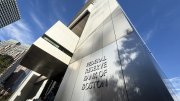Changes to federal policy on finance and higher education may pose significant risks to universities. U.S. Representative Tom Reed (R-N.Y.), who was appointed a vice chair of President-elect Donald J. Trump’s transition team in late November, filed a new version of his Reducing Excessive Debt and Unfair Costs of Education (REDUCE) Act earlier that month. It would require institutions with endowments exceeding $1 billion to use “at least 25 percent of their investment gains to reduce the costs of attendance for students from middle and working class families.”
The legislation appears not to take into account students’ actual costs of attendance after financial-aid awards—which in many cases are now higher at public institutions than endowed private ones, after a decade of state budget cuts aimed at public universities. The National Commission on Financing Twenty-First Century Higher Education, based at the University of Virginia, released its report a week after Reed updated his plan. The bipartisan group of political and business leaders recommended investments in low-cost education models, productivity enhancements, and more—but its first recommendation was for $15 billion in additional federal funding and $5 billion in additional state funding for public institutions.
Nor does Reed make allowances for endowment gifts made for specific purposes: the tax exemption for endowment earnings, he writes bluntly, should “encourage colleges to distribute the profits from their investments to help offset the costs of attendance.” He does not allow breathing room for gifts to support research, the arts, or other goals: “For those colleges that fail or refuse to reinvest in their students, an immediate 30 percent tax would be applied to their investment income with the possibility of a 100 percent tax for continuing violations.…In addition, failure to comply would result in the school losing their ability to receive charitable contributions.” Under Reed’s plan, would Harvard be unable to accept the $400-million and $350-million gifts, respectively, that endowed the engineering and public-health faculties during the current capital campaign—even though both schools aim at practical, applied solutions to pressing national and global problems? What about recent nine-figure gifts to Columbia, the University of Southern California, and the University of Oregon for neuroscience, cancer, and general scientific research? (Indirectly, of course, an endowment gift that pays for libraries or professorships means that those revenues don’t come from tuition, but his proposals don’t seem focused that way.)
More broadly, proposals to reduce the top income-tax rates would reduce the incentive to make charitable gifts. On the other hand, proposals to end hedge-fund and private-equity managers’ preferential “carried interest” tax rate might raise that class of substantial donors’ taxes somewhat, making their philanthropic pursuits more valuable.
As fundraisers digest these possibilities—and fight to control their resulting indigestion—the Council for Advancement and Support of Education (CASE) and other trade groups are sounding the alarm. CASE, for instance, is disseminating fact sheets for member institutions to use in rebutting arguments for taxing endowments, targeting a fixed percentage of their distributions for financial aid, or mandating a payout rate (like the rule requiring nonoperating foundations to distribute 5 percent of their market value annually). Business should be brisk for higher-education lobbyists.







